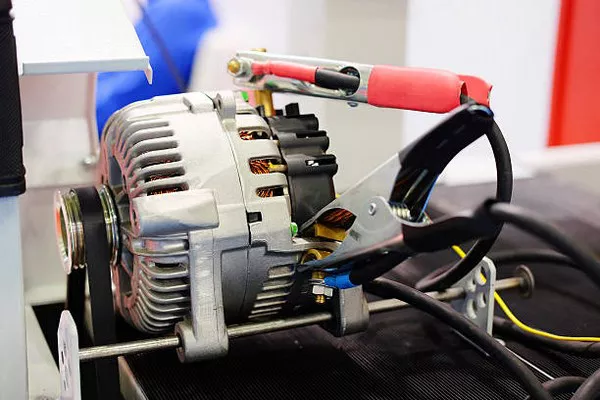In our quest for cleaner and more sustainable energy sources, permanent magnet generators (PMGs) have emerged as a valuable technology. PMGs play a crucial role in various renewable energy applications, from wind turbines to hydroelectric power systems. To harness the power of these generators effectively, it is essential to understand how they work. In this article, we will delve into the inner workings of permanent magnet generators, exploring their principles, components, and advantages.
Principles of Permanent Magnet Generators
At its core, a permanent magnet generator operates on the fundamental principles of electromagnetic induction. This phenomenon was first discovered by Michael Faraday in the early 19th century and forms the basis of most electrical generators. In simple terms, electromagnetic induction involves the generation of an electromotive force (EMF) or voltage in a conductor when exposed to a changing magnetic field. PMGs leverage this principle to generate electrical power in a highly efficient manner.
Components of Permanent Magnet Generators
To understand how PMGs work, let’s break down their essential components and their roles in the generation of electricity:
Permanent Magnets: The heart of a PMG is a set of powerful permanent magnets. These magnets create a static magnetic field within the generator, which remains constant over time. The key advantage of permanent magnets is their ability to maintain their magnetism without the need for an external power source.
Rotor: The rotor is a component that houses the permanent magnets. It is designed to spin or rotate within the generator. As the rotor turns, the magnetic field produced by the permanent magnets also moves, inducing a changing magnetic field in the generator’s stator.
Stator: The stator is a stationary component surrounding the rotor. It consists of coils of wire, typically made of copper, that are wound around a core. When the magnetic field generated by the rotating magnets interacts with the coils in the stator, it induces an electric current in the wires due to electromagnetic induction.
Output Terminals: The generated electrical current is collected and sent to the electrical grid or used to power various devices through output terminals connected to the stator coils.
Working Mechanism of Permanent Magnet Generators
The operation of a PMG can be summarized in the following steps:
Magnetic Field Generation: The permanent magnets embedded in the rotor create a constant magnetic field within the generator. This magnetic field remains unchanged as long as the magnets maintain their magnetism.
Rotor Rotation: External mechanical energy, such as wind or water flow, is used to rotate the rotor. This rotation causes the magnetic field produced by the permanent magnets to move relative to the stator.
Induction of Current: As the magnetic field produced by the rotating rotor interacts with the stator coils, electromagnetic induction occurs. The changing magnetic field induces an electric current to flow in the wire coils of the stator.
Electrical Output: The induced current is collected from the stator coils through the output terminals. It can then be either used immediately to power electrical devices or transmitted to the electrical grid for distribution.
Advantages of Permanent Magnet Generators
Permanent magnet generators offer several advantages that make them highly desirable for various applications:
Efficiency: PMGs are known for their high efficiency in converting mechanical energy into electrical energy. The absence of field excitation (as in conventional generators) reduces energy losses and enhances overall efficiency.
Compact and Lightweight: PMGs are compact and lightweight compared to some other generator types, making them suitable for use in various renewable energy systems, such as small wind turbines.
Low Maintenance: Since PMGs do not require a separate power source to maintain the magnetic field, they have lower maintenance requirements compared to generators with field windings.
Reliability: The inherent stability of permanent magnets ensures consistent power generation over time, contributing to the reliability of PMGs.
Sustainability: Permanent magnets are typically made from materials like neodymium and samarium-cobalt, which are readily available and recyclable. This aligns with sustainability goals in renewable energy production.
Applications of Permanent Magnet Generators
Permanent magnet generators find applications in a range of renewable energy systems, including:
Wind Turbines: Small and medium-sized wind turbines often use PMGs to convert wind energy into electricity efficiently.
Hydroelectric Power Plants: PMGs can be employed in micro-hydroelectric systems, where flowing water is used to turn the rotor and generate electricity.
Wave and Tidal Energy: In wave and tidal energy converters, PMGs are utilized to harness the energy from ocean waves and tides.
Portable Generators: PMGs are used in portable generators for camping and remote power generation due to their compactness and efficiency.
Electric Vehicles: Some electric vehicles use PMGs as generators to recover energy during regenerative braking, converting it back into electrical energy to recharge the battery.
Conclusion
Permanent magnet generators are a vital component of the renewable energy landscape, offering high efficiency, low maintenance, and reliability. By harnessing the principles of electromagnetic induction and the power of permanent magnets, these generators contribute significantly to the transition to cleaner and more sustainable energy sources. Understanding their operation is crucial for the development and deployment of renewable energy systems that can reduce our reliance on fossil fuels and mitigate the impact of climate change.

